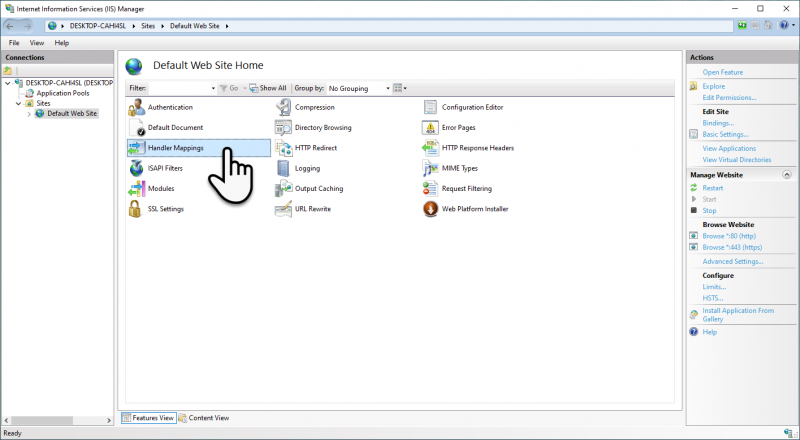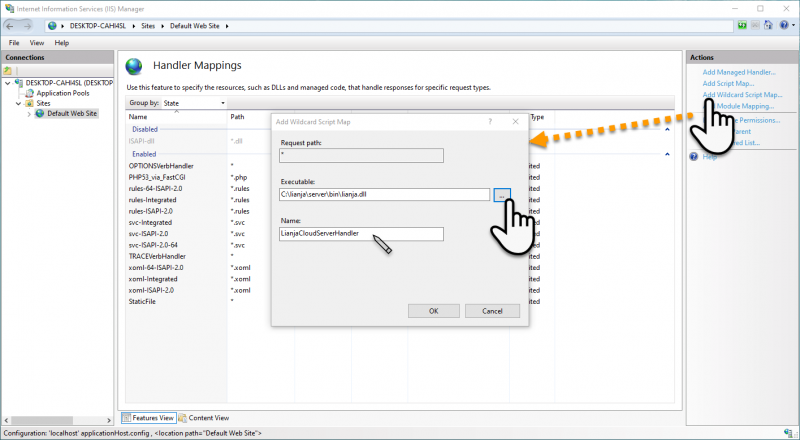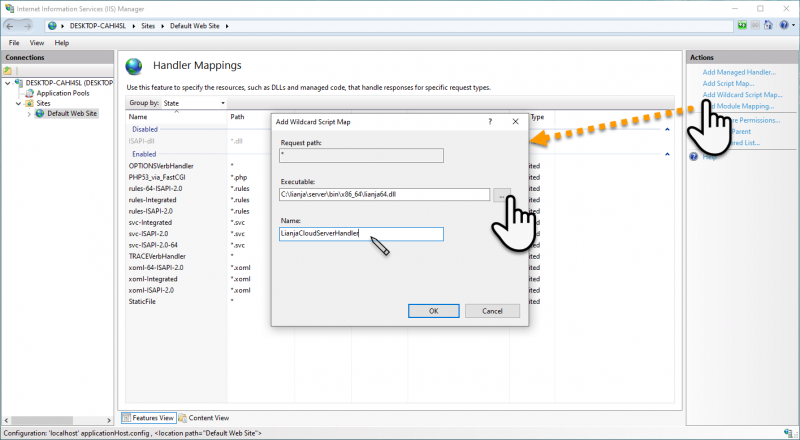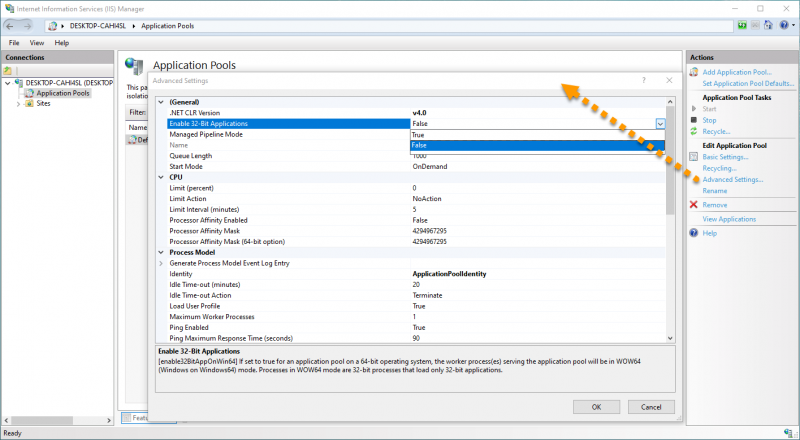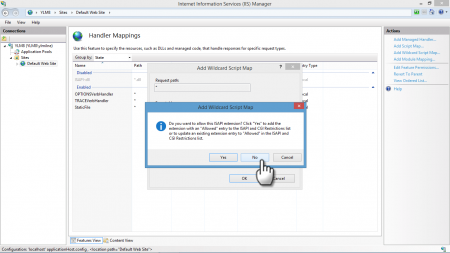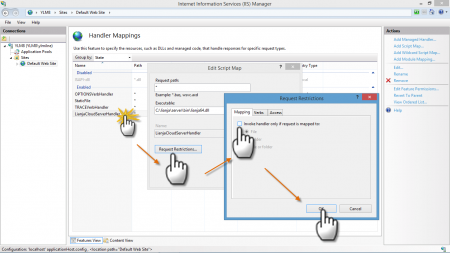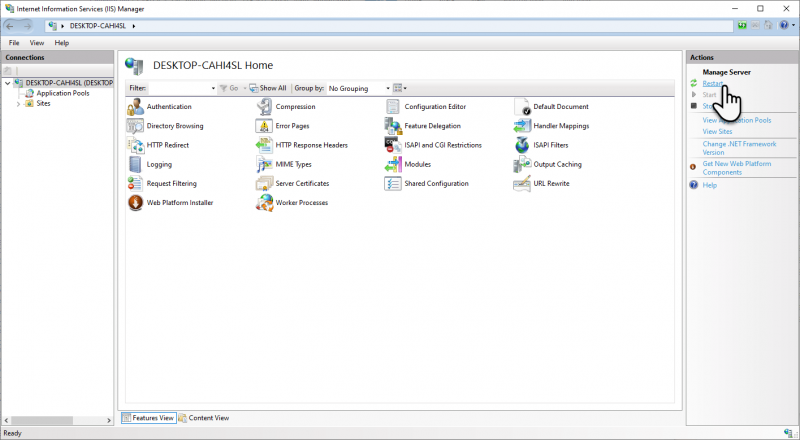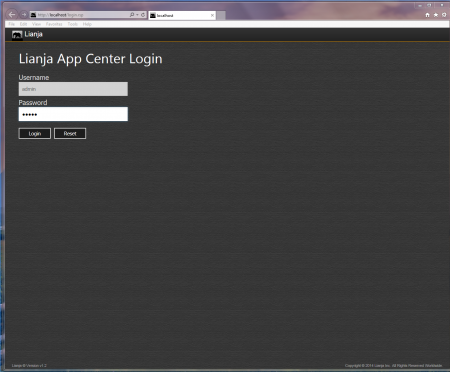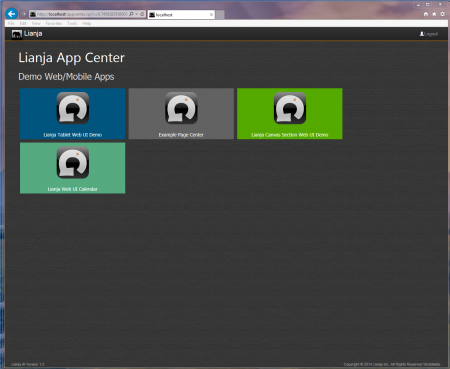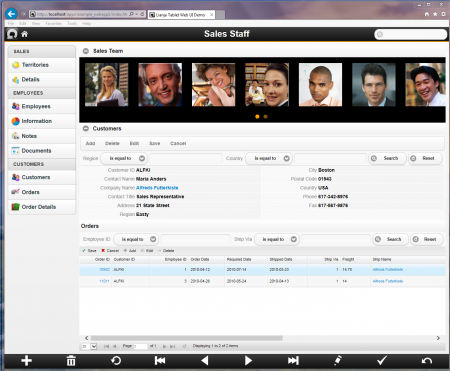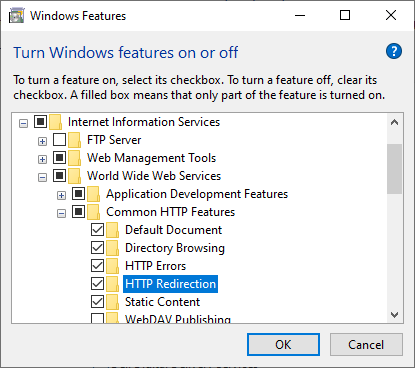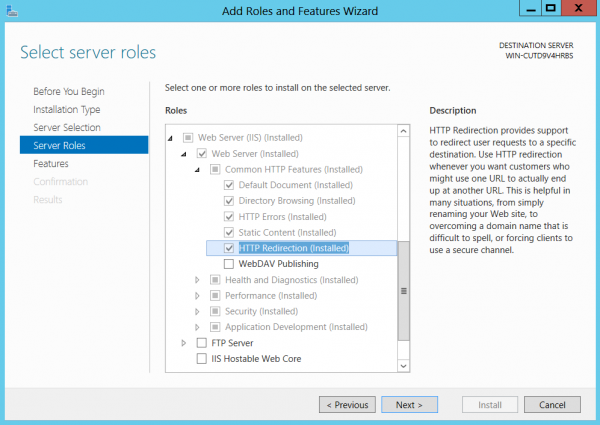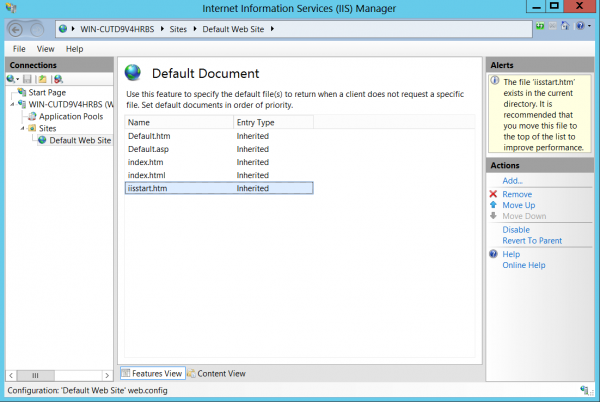ISAPI Extension for IIS
Contents
See Also
Creating a Self-Signed Certificate
Installing and Configuring the Lianja ISAPI Extension for IIS
If you want to integrate Lianja Cloud Server in with IIS you need to install and configure the Lianja ISAPI Extension for IIS.
The Lianja Cloud Server ISAPI Extension handles built-in connection pooling providing optimum performance when used with IIS.
This will provide both HTTP and HTTPS (SSL) access to your Lianja Apps and the whole Lianja APaaS with integrated Login, App Center and Logout.
If Internet Information Services is not already installed, it can be added from Turn Windows features on or off or for Windows Server Add Roles and Features. Check the box for Internet Information Services > World Wide Web Services > Application Development Features -> ISAPI Extensions if it is not selected by default.
To install and configure the Lianja ISAPI Extension for IIS perform the following steps.
IIS Manager
Open the IIS Manager:
Windows 10: Control Panel > Administrative Tools > Internet Information Services (IIS) Manager
Windows 11: Control Panel > Windows Tools > Internet Information Services (IIS) Manager
Windows Server: Server Manager > Tools> Internet Information Services (IIS) Manager
Select the target site and double-click Handler Mappings or select Handler Mappings and click Open Feature in the Actions panel.
Add Wildcard Script Map
Click Add Wildcard Script Map... in the Actions panel.
Click [...] to select the Executable for your architecture as shown below (32 bit / 64 bit).
Enter the Name for the Handler:
LianjaCloudServerHandler
Windows 32 bit
The 32 bit Lianja ISAPI Extension is:
Drive:\lianja\server\bin\lianja.dll
Windows 64 bit
From v6.0 the 64 bit Lianja ISAPI Extension is
Drive:\lianja\server\bin\x86_64\lianja64.dll
Prior to v6.0 it is:
Drive:\lianja\server\bin\lianja64.dll
Note that on 64 bit Windows systems, the Lianja ISAPI Extension bit type must match the Application Pool.
If the Application Pool has Enable 32-bit Applications set to False, lianja64.dll should be used.
If the Application Pool has Enable 32-bit Applications set to True, lianja.dll should be used.
ISAPI and CGI Restrictions
Click No when prompted.
If you receive the error The specified module required by this handler is not in the modules list, please go to Turn Windows features on or off and add ISAPI Extensions (Internet Information Services > World Wide Web Services > Application Development Features).
Double-click the newly added Handler to Edit.
Click the Request Restrictions... button.
Uncheck Invoke handler only if request is mapped to:.
Click OK.
This time, click Yes when prompted.
Restart IIS
Click Restart to restart the Server.
Run using IIS
That's it. You have now integrated Lianja Cloud Server into IIS so now you can use http and https/SSL directly against IIS to serve your Lianja Apps and Data.
To login, specify login.rsp.
The default Username/Password is admin/admin.
See below how to redirect the IIS Default Document to login.rsp.
Once logged in, you will be taken to the App Center.
Note: you will only see deployed Apps.
Click an App's tile to load the App.
Redirect Default Document
To redirect the IIS Default Document to login.rsp, first make sure the HTTP Redirection feature is installed.
Windows:
Windows Server:
Then, as an administrator, edit the web.config file for the site and add in the redirection to your existing configuration.
Here just showing the httpRedirect specification:
<httpRedirect enabled="true" exactDestination="true" httpResponseStatus="Found"> <add wildcard="/iisstart.htm" destination="/login.rsp" /> </httpRedirect>
Note that this assumes iisstart.htm is the first reached Default Document. If this is not the case, replace iisstart.htm in the code above.
